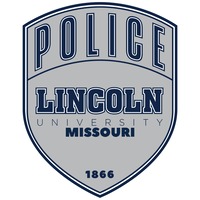Emergency Response and Evacuation Policy
Lincoln University Police Department
In compliance with 34 CFR 668.46(g) the following describes the policies of Lincoln University's Emergency Response and Evacuation procedures.
The university will determine that there is a significant emergency or dangerous situation involving an immediate threat to the health or safety of students or employees on campus by utilizing LUPD personnel and/or other campus security personnel (i.e. Residence Hall Directors or Residence Hall Advisors, among others) to gather and relay information to the LUPD dispatch. The LUPD will inform the President's Office of any emergency or dangerous situation as soon as possible.
Currently Lincoln University makes emergency notifications to the university community upon confirmation of a significant on-campus emergency or dangerous situation involving an immediate threat to the health or safety of students or staff by the following ways:
- Public address systems in buildings so equipped
- Digital public address systems located across campus for outside campus wide notifications
- University wide e-mails originating from the Office of University Relations at the request of the Lincoln University Police Department or higher authority
- Limited telephone trees (an inverse pyramid-like notification system)
- Emergency broadcasts via the university radio station
- Emergency broadcasts via the university television station
- Roving patrols and use of sirens, lights and public address systems on marked Lincoln University PD patrol vehicles
Lincoln University will without delay and taking into account the safety of the community, determine the content of the notification and initiate the notification system, unless issuing a notification will, in the professional judgment of responsible authorities, compromise efforts to assist a victim or to contain, respond to or otherwise mitigate the emergency. Notifications will be issued from the University Relations Office in cooperation with the Lincoln University Police Department and/or the President's Office.
These notifications, when issued, will explain to the students, faculty and staff procedures they should take in consideration of the particular emergency at hand, including either evacuating from a particular area, building or other location, or moving to shelter such as a basement or lower level in the event of severe weather.
In an effort to publicize the university's evacuation and emergency response procedures, a pamphlet is distributed annually to students in the residence halls by the Director of Student Housing. Furthermore, the Lincoln University Police Department disseminates educational literature specific to the Lincoln University campus on what to do in a variety of emergencies. These pamphlets are provided during orientation to students and during the annual fall Faculty-Staff Institute, a mandatory training session each August for all Lincoln University faculty and staff.
Efforts to test notification and emergency plans are ongoing throughout the year and are conducted in a variety of ways including:
- The establishment of a university-wide Emergency Operations Team which schedules and conducts table top exercises involving key personnel of Lincoln University in mock scenarios. (Included in these key personnel among others are the university president and staff and the chief law enforcement officer of the university.)
- Annual evacuation drills for campus buildings
- Routine fire drills for campus buildings
- Annual testing of the digital public address systems located across campus for outside campus wide notifications
- Clearly marked storm shelters on each building where said shelters are available throughout the campus. Storm shelters are on the lowest point of every building, on an interior hallway or room. The only exception to this is the Buildings and Grounds building; occupants evacuate to Soldiers Hall.
The university documents all emergency/evacuation exercises or drills it conducts. The documentation includes the time and date of the drill, the evacuation beginning and end time, and whether the drill was announced or unannounced. Drill forms are completed by department heads or their designees. Forms are maintained in the respective department offices.
Particular procedures that the university takes in response to emergencies vary by the particular emergency at hand. Thus, it is impossible to provide a detailed response plan in this document for every emergency that could possibly arise. However, in an effort to provide this information in the most generic of forms it is broken down into medical, environmental, fire and law enforcement related emergencies. Each closely resembles the actions listed earlier in this report under "CAMPUS RESPONSE TO REPORTS of CRIMES and EMERGENCIES."
FIRE RELATED EMERGENCY: Such response could include the response of members of the Jefferson City Fire Department and, in cases of large fires responses, could be augmented by response from the Cole County Fire Protection District and Callaway County Fire Services.
MEDICAL RELATED EMERGENCY: Such response could include first responders from the Lincoln University Police Department, the university health nurse and physician (if during their duty hours), the Jefferson City Fire Department (who have EMTs in their units), ambulance units from the Cole County Fire Department (staffed by EMTs and paramedics) and, in cases of multiple victims, this service could be augmented from neighboring jurisdictions including Callaway County, Boone County and other close in jurisdictions.
ENVIRONMENTAL EMERGENCY: Such response could include a response from any of the aforementioned agencies and include a response from the Missouri Department of Natural Resources Environmental Emergency Response Team and, in extreme situations, the Missouri Army National Guard's WMD-RAID unit (Weapons of Mass Destruction - Rapid Assessment, Interdiction and Decontamination).
LAW ENFORCEMENT EMERGENCY: Could include an immediate response of armed police officers from the Lincoln University Police Department and, if the situation warrants it, officers could be augmented by the Jefferson City Police Department and Cole County Sheriff's Department and the Missouri State Highway Patrol. In extreme situations, such as in the case of an active shooter, this response could be augmented by members of the Special Response Teams of the Jefferson City Police Department, Cole County Sheriff's Department and the Missouri State Highway Patrol. These particular teams have officers who are specially trained in a variety of scenarios and situations including hostage rescue, dynamic building entries and others.
See LUPD Emergency Information Procedures for more information on specific types of emergencies.
See the Evacuation of Individuals with Disabilities for more information on the evacuation plan for individuals with disabilities.
